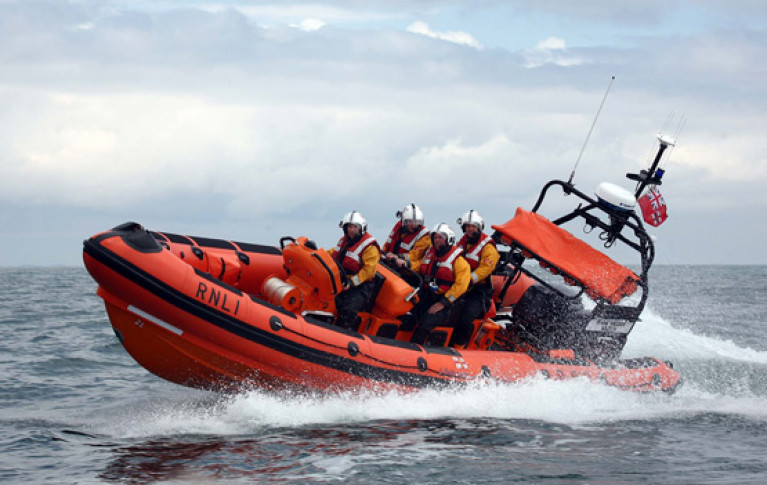Kilkeel RNLI launched to the rescue a windsurfer who got into difficulty off Cranfield Point on Saturday (14 November).
The volunteer crew set out on their inshore lifeboat at 3.25pm on Saturday as part of a multi-agency tasking that also involved Kilkeel Coastguard, Greenore Coast Guard and the Irish Coast Guard helicopter Rescue 116 from Dublin.
Onshore, Kilkeel Coastguard had spotted the sail of the windsurfer just north of Carlingford Lough’s shipping channel and directed lifeboat helm Gerry Smyth towards the casualty, who had been one of a group of eight.
The other seven members of the group had made it safely to shore. In Force 5-6 winds and in a moderate sea, the casualty and his gear were taken onboard.
The exhausted casualty was checked by the lifeboat crew for injury, water inhalation and the effects of the cold conditions. He was then made comfortable and brought safely ashore. The lifeboat returned at 4.15pm where the grateful surfer was met by Kilkeel Coastguard.
Speaking following the callout, Kilkeel’s lifeboat operations manager John Fisher said: “The crew did everything in a thoroughly professional manner and we would like to wish the casualty well.
“Because of Covid-19, the crew have been restricted in their training exercises but this afternoon they demonstrated their skills with this rescue also highlighting how well multiple agencies work together.”
The crew readied to launch for a second time over the weekend at 2.15pm yesterday (Sunday 15 November) following a call that an EPIRB had been activated.
However, after an extensive local onshore search it was found that the EPIRB was faulty and was located in a boat owner’s garage.































































